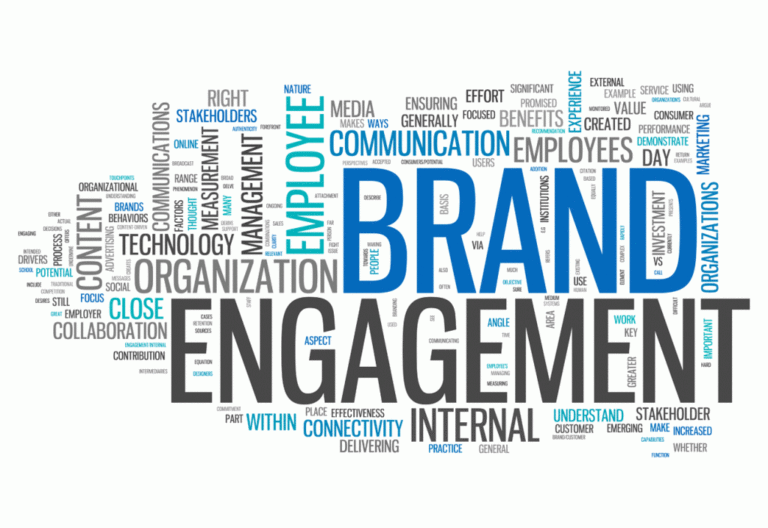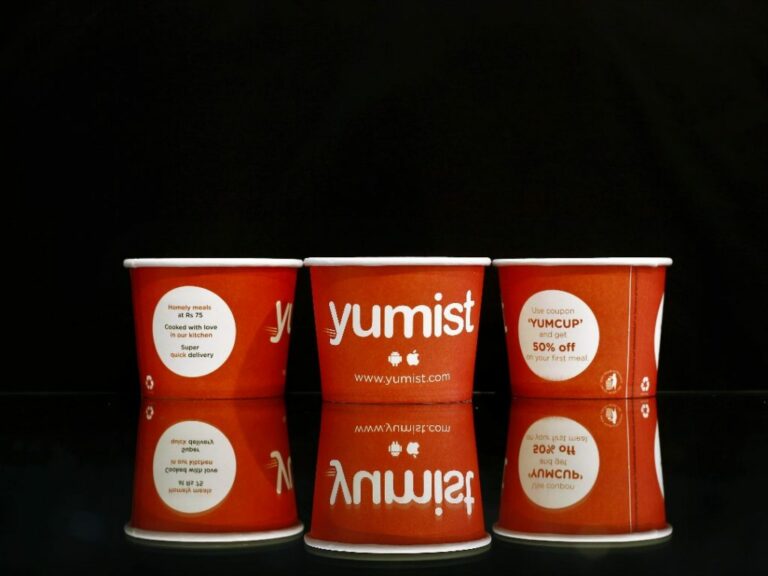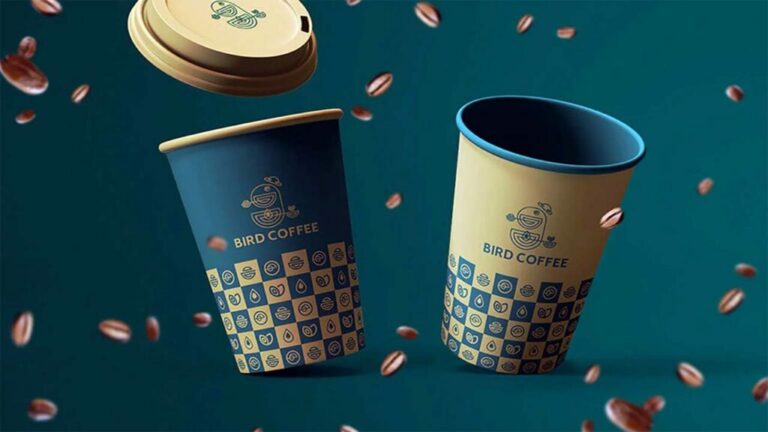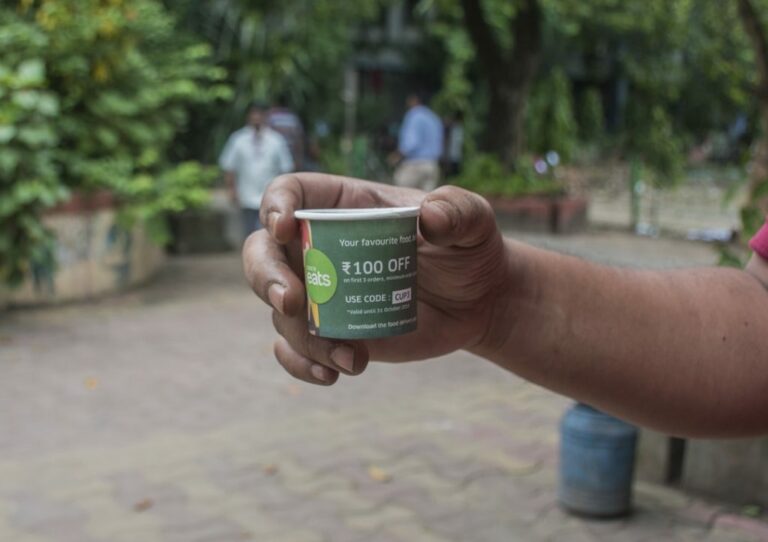9 Biggest Mistakes to Avoid When Advertising on Paper Cups
Paper cups have become an increasingly popular and effective medium for businesses to advertise their products and services. These versatile vessels offer a unique opportunity to connect with a wide audience in a cost-effective manner. However, even though paper cup advertising can be a valuable addition to your marketing strategy, it’s essential to be aware of common mistakes that can hinder your campaign’s success.
In this article, we will delve deeper into the ten most significant mistakes to avoid when advertising on paper cups and explore how you can maximize the impact of this creative advertising platform.
Importance of Advertising on Paper Cups
Advertising on paper cups offers a unique and effective way to promote your business. These cups, often used for beverages, provide a mobile platform for your brand’s message, reaching a broad audience as they are carried and displayed in various settings.
The tactile nature of paper cups allows customers to physically engage with your brand, creating a memorable experience. Moreover, these cups are often shared on social media, extending your brand’s reach to an even wider audience.
Furthermore, paper cup advertising is cost-effective, making it accessible to businesses of all sizes. It’s an eco-friendly option, especially when using biodegradable cups, aligning your brand with sustainability values.
Incorporating compelling visuals, clear messaging, and a call to action on paper cups can make your marketing efforts more impactful. Advertising on paper cups offers a versatile, cost-efficient, and eco-conscious means to connect with your audience and leave a lasting impression.
Biggest Mistakes to Avoid When Advertising on Paper Cups
1. Using Poor Quality Images
The saying, “a picture is worth a thousand words,” holds true in advertising. The images you choose for your paper cups are the first things your potential customers will notice. Low-quality, pixelated, or visually unappealing images can make your cups look unprofessional and fail to capture people’s attention. To avoid this common pitfall, invest in high-quality images that not only convey your message effectively but also align with your brand’s aesthetic. Whether it’s product shots, lifestyle images, or graphics, ensure they are crisp, clear, and engaging.
High-resolution images can do wonders for your paper cup design, making it visually enticing and more likely to attract the eye of passersby. In the realm of paper cup advertising, image quality is your first and foremost opportunity to make a positive impression.
2. Cluttering Your Cups with Too Much Text
Brevity is the soul of wit, and in advertising, it is the key to capturing your audience’s attention. Your paper cups should convey a clear and concise message that is easy for people to digest. If you overload your cups with an excess of text, you risk overwhelming your audience, causing them to disengage.
Effective messaging on paper cups is about conveying your core message in a succinct manner. Avoid the temptation to provide excessive information. Instead, focus on what is most critical to your campaign. Remember that paper cups are a glance-and-go medium; therefore, your message should be easily digestible within seconds.
3. Using a Small Font Size
Typography plays a pivotal role in ensuring that your message reaches your audience effectively. If your font size is too small, people will struggle to read your message, leading to frustration and missed opportunities. To mitigate this issue, select a font size that is large enough for easy reading from a reasonable distance.
Keep in mind that your paper cups may be held, placed on tables, or passed between friends. A readable font size ensures that your message remains accessible regardless of how the cups are handled or viewed. Prioritize legibility to maximize the impact of your message.
4. Not Including a Call to Action
In the world of advertising, action is the ultimate goal. A clear and concise call to action (CTA) directs your audience on what you want them to do next. This might include visiting your website, following your social media profiles, or making a purchase. Failing to include a CTA is a missed opportunity to engage your audience and convert interest into action.
Your CTA should be prominently featured on your paper cups, encouraging people to take the desired steps immediately. Whether it’s “Scan to Shop,” “Follow Us on Instagram,” or “Visit Our Website for Exclusive Offers,” make it compelling and straightforward.
5. Not Targeting Your Audience
One of the fundamental principles of advertising is understanding your target audience. When designing your paper cups, you must think deeply about who your intended audience is and what messaging will resonate with them. The design elements you choose should align with your audience’s demographics, preferences, and interests.
For instance, if your target audience is young adults, employing vibrant colors and trendy fonts can make your paper cups more appealing. Conversely, if your audience is more mature, a more sophisticated and classic design may be more effective. Understanding your audience’s preferences ensures that your paper cup advertising speaks directly to the hearts and minds of your potential customers.
6. Using the Wrong Type of Cup
Paper cups come in various types, including single-wall cups, double-wall cups, and insulated cups. Each type serves a different purpose and price point. Selecting the wrong type of cup for your campaign can affect both your budget and the effectiveness of your advertising.
Choosing the appropriate cup type is crucial. Single-wall cups are typically the most cost-effective but may not be suitable for hot beverages. Double-wall cups offer insulation for hot drinks and an added layer for branding. Insulated cups maintain beverage temperature for longer periods but come at a higher cost. Carefully evaluate your needs and budget to make an informed decision on the cup type that aligns best with your campaign objectives.
7. Not Using Eco-Friendly Cups
In an era where environmental consciousness is on the rise, consumers increasingly appreciate businesses that make eco-friendly choices. Utilizing compostable or recyclable paper cups not only demonstrates your commitment to sustainability but also resonates with a broader audience of environmentally-conscious consumers.
Eco-friendly cups not only align with ethical consumerism but also enhance your brand’s image as one that cares about the environment. This choice can set you apart from competitors and attract a growing base of eco-conscious customers.
8. Not Testing Your Designs
Before ordering a significant quantity of paper cups, it’s prudent to test your designs with a select group of individuals. Solicit their feedback and observe their reactions to your messaging and visuals. This step allows you to identify potential design flaws and make necessary improvements before proceeding with mass production.
Testing your designs is a preemptive measure to ensure that your paper cups effectively communicate your message and resonate with your audience. Constructive feedback from a test audience can reveal insights that lead to a more impactful final design.
9. Not Ordering Enough Cups
Running out of branded paper cups mid-campaign can be a costly and inconvenient mistake. To avoid this predicament, it’s crucial to estimate the quantity you’ll need and order a sufficient amount to last for the entire duration of your advertising campaign. Overlooking this detail could result in unexpected expenses and logistical challenges.
A well-calculated quantity ensures that your paper cup advertising campaign runs smoothly without interruptions. Consider the duration of your campaign, the volume of foot traffic, and potential fluctuations in demand when determining the required quantity.
Consequences of Improper Paper Cup Advertising
Improper advertising on paper cups can have detrimental consequences for your brand. First and foremost, using poor-quality images or cluttering your cups with excessive text can undermine your brand’s professionalism and fail to capture the audience’s attention. This can result in wasted advertising dollars and missed opportunities to engage potential customers.
Additionally, utilizing a small font size or omitting a clear call to action can lead to confusion and disinterest among your audience, diminishing the effectiveness of your marketing campaign. Failing to target your specific audience’s preferences and needs can result in a lack of resonance, making your message less impactful.
Not testing your designs or ordering an insufficient quantity of cups can disrupt your campaign and lead to logistical challenges.
Improper advertising on paper cups can have far-reaching consequences, including wasted resources, a negative brand image, and missed opportunities to connect with your audience effectively.
Final Thoughts
Paper cups offer a unique and cost-effective medium for advertising that can have a significant impact on your brand’s visibility and recognition. However, to maximize the effectiveness of your paper cup advertising campaign, it’s crucial to avoid the common mistakes outlined above. Utilize high-quality images, maintain clear and concise messaging, include a compelling call to action, and align your design with your target audience.
Additionally, choose the right cup type, consider eco-friendly options, test your designs, order an adequate quantity, and actively promote your campaign. By paying attention to these details and committing to audience engagement, you can use the full potential of paper cup advertising and leave a lasting impression on your customers.





